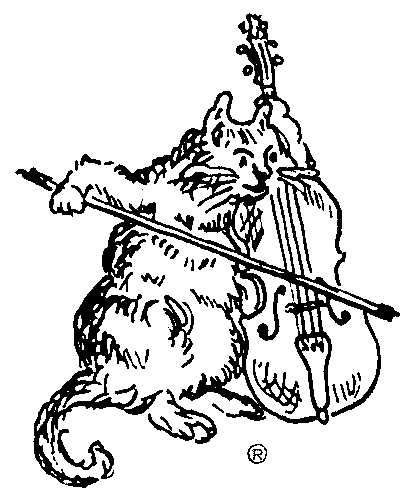
|
Founding a Family of Fiddles
|

|
Founding a Family of Fiddles
|
Saunders, widely known for his work on Russell-Saunders coupling, pioneered violin research on this side of the Atlantic. He was a former chairman of the physics department of Harvard University, a fellow of the National Academy of Sciences and president of the Acoustical Society of America. In his work on violin acoustics, Saunders gradually became associated with colleagues who were highly competent in various scientific and musical disciplines. These associates greatly furthered the development of his work and contributed valuable technical knowledge, but they had little time for experimentation. Some were skillful musicians living under the pressure of heavy teaching and concert schedules. Nevertheless some were able to find time for the testing, designing and craftsmanship needed in the development of experimental instruments. In 1963 about 30 persons associated with Saunders in this project labeled themselves the "Catgut Acoustical Society." This informal society now has more than 100 members (see box on page 26), publishes a semiannual newsletter and holds one or two meetings each year. Among its members are acousticians, physicists, chemists, engineers, instrument makers, composers, performing musicians, musicologists, patrons and others who believe that insufficient attention has been paid to the inherent potentialities of bowed string instruments. They are making a coordinated effort to discover and develop these potentialities and are encouraged that many members of the violin fraternity share their aims.
Among other accomplishments of our Catgut Acoustical Society is a concert played at Harvard last summer during the meeting of the Acoustical Society of America. It was dedicated to Saunders and the instruments were our eight new fiddles, which are the outgrowth of research he began. I write about the concert and about the instruments as a member of the society and as one who worked with Saunders from 1948 until his death in 1963. My activities include reconciliation of the wisdom of experienced musicians and violin makers, coordination of much technical information from widely separated sources, and design, construction and testing of experimental instruments. In 1937 Saunders reported [Ref 1] in the Journal of the Acoustical Society of America what later proved to be basic to the development of the new violin family, namely the position of the main body resonance as well as the main cavity resonance in a series of excellent violins. (The main body resonance is the lowest fundamental resonance of the wood structure; the cavity resonance is that of the air in the instrument cavity.) But the necessary knowledge of how to place these resonances with any degree of predictability in instruments of good tone quality was not evolved and reported until 1960. [Ref 2] The tonal effect of this placement of the two main resonances for each instrument and the necessary scaling theory was not reported until 1962. [Ref 3]
Between 1950 and 1958 Saunders and I undertook a long series of experiments to test various features of violin construction one at a time. We determined effect of variations in length, shape and placement of the f holes, position of the bass bar and sound post, significance of the inlay of purfling around the edges of top and back plates and frequency of the cavity resonance as a function of rib height and f hole areas (see figure 2). Because many of these experiments needed definitive testing equipment not then available, most of the results are still unpublished in Saunders's notebooks.
One sobering conclusion we reached was that with many alterations in such
features as size and shape of f holes, position of the bass bar and sound post,
the best tonal qualities resulted when conventional violin-making rules were
followed. In other words, the early violin makers, working empirically by slow
trial and error, had evolved a system that produced practically optimal
relationships in violin construction.
In 1958, during a long series of experiments to test the effect of moving
violin and viola resonances up and down scale, the composer in residence at
Bennington College, Henry Brant, and the cellist, Sterling Hunkins, proposed
development of eight violin-type instruments in a series of tunings
and sizes to cover substantially the whole pitch range used in written music;
these instruments would start with an oversize contrabass and go to a tiny
instrument tuned an octave above the violin. Their request was so closely
related to our experimental work that after half an hour's discussion Saunders
and I agreed that a serious attempt would be made to develop the set.
The main problem would be to produce an instrument in each of the eight
frequency ranges having the dynamics, the expressive qualities and overall
power that are characteristic of the violin itself, in contrast to the
conventional viola, cello and string bass.

Return to CAS Home Page
Send all comments/suggestions to vandekopple@fordham.edu